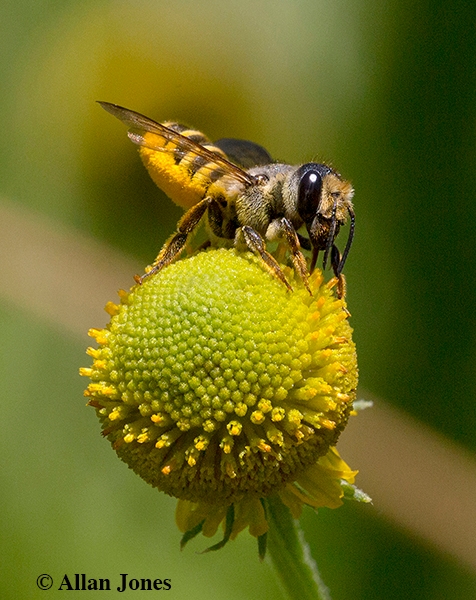
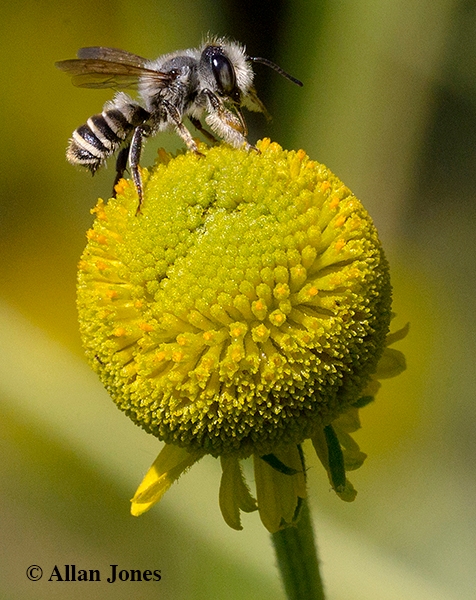
He pulls up a chair, mounts his Canon on his tripod, and adjusts the lens settings--and the trademark hat that shades his face.
His passion: insects. They cannot escape his quick eye and steady hands. Not the honey bee. Not the leafcutter bee. Not the bumble bee. And not the territorial male European wool carder bees that he has nicknamed “bonker bees” (for their behavior of dislodging other bees from the nectar-rich blossoms in order to save the food for their own species, perchance to mate with them.)
Allan Jones delights in not only capturing images of insects, but learning more about them, and sharing his finds with others.
And on Saturday, Sept. 22, he will display many of his images at the Häagen-Dazs Honey Bee Haven open house, set from 11 a.m. to 2 p.m. The event, free and family friendly (and the last open house of the year), will include a catch-and-release bee activity, and a sale of bee plants and solitary bee condos (drilled holes in blocks of wood for bee nests, accommodating leafcutter bees and blue orchard bees). Plus, visitors will receive recommendations on what to plant for the fall to attract pollinators.
Jones will exhibit images of male and female bees of the same species, including a male and female leafcutter bee, Megachile fidelis, on sneezeweed, Helenium autumnale.
Among his many other images: a leafcutting bee “flying a bit of Clarkia petal back as nest material” and a “honey bee vs. wasp image designed to help define and differentiate bees and wasps.”
An alumnus of UC Davis, Allan became an Aggie in 1961, receiving degrees in English and German in 1966, and his master's in English in 1972. He joined the doctoral program in 1973 "but I quit in 1974, making my summer job of inspecting tomatoes my career for 43 seasons (with California Department of Food and Agriculture for half of his career, and then working with CDFA on an independent advisory board). I did some workmanlike macro photography of tomato defects and wider shots of the inspection process for training. “
He spent the ‘70s in Dixon, and the ‘80s and ‘90s in Sacramento “before moving back to Davis after 2000.”
“Working tomatoes six to nine months a year allowed me to pursue art and later landscape photography along the American River,” Jones related. “During the winter of 1982. I tried to capture glimpses of the American River in every light as the historic wild braided river it once was. The scenes are painterly, echoing the Hudson River School. When I moved from Sacramento back to Davis I turned to the UC Davis Arboretum, picking up macro shots to enhance a PowerPoint program I made for the Sacramento State Renaissance Society."
Jones is keenly drawn to the behavior of insects. “My intent with insects and bees is the capture their behaviors in context, that is, together with the flowers they pollinate,” Jones says. “I often use layers in PhotoShop to get the flower as well as the insect in focus. For me the co-evolution of bees and flowers requires them both to share the stage. I aim for a tiny diorama from an illustrator's perspective.”
His camera gear? “I am between Canon platforms. I have an older Canon 6D with a Sigma 180 macro and am moving to a Canon, Mark 2 EOS 1DX, with a new 100-400 telephoto lens using a 20 mm extension tube for macro--my new favorite. First I shoot the bee at least once then take multiple shots of the flower(s) for effective layering.”
Jones is a volunteer photographer for both the haven and the UC Davis Arboretum. He works closely with native pollinator specialist Robbin Thorp, UC Davis distinguished emeritus professor of entomology, who identifies and/or confirms his identifications. Thorp, who maintains an office in the nearby Harry H. Laidlaw Jr. Honey Bee Research Facility, co-authored Bumble Bees of California: An Identification Guide (2014, Princeton University Press) and California Bees and Blooms: A Guide for Gardeners and Naturalists (2014, Heyday Books).
The haven, installed in the fall of 2009 and located at the end of Bee Biology Road, is open from dawn to dusk. It is directed by Extension apiculturist Elina Lastro Niño of the UC Davis Department of Entomology and Nematology. Christine Casey, the haven's academic program manager, says many difficult-to-find pollinator plants will be on sale. (See the plant list.)
Attached Images:
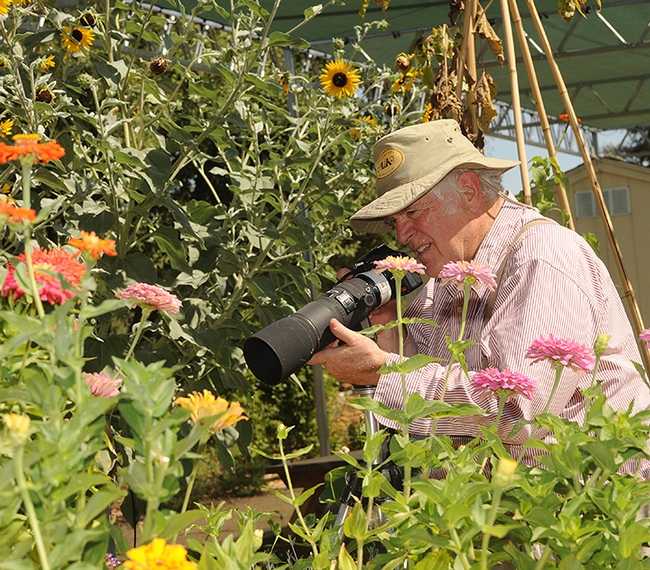
Photographer Allan Jones of Davis focuses his camera on insects in the Häagen-Dazs Honey Bee Haven. (Photo by Kathy Keatley Garvey)
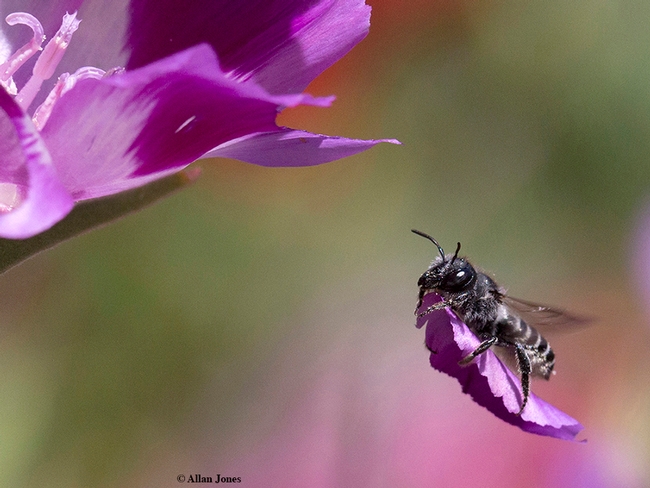
A female leafcutter bee, Megachile fidelis, carries a leaf, a Clarkia petal, back to her nest. (Copyrighted photo by Allan Jones, used with permission)
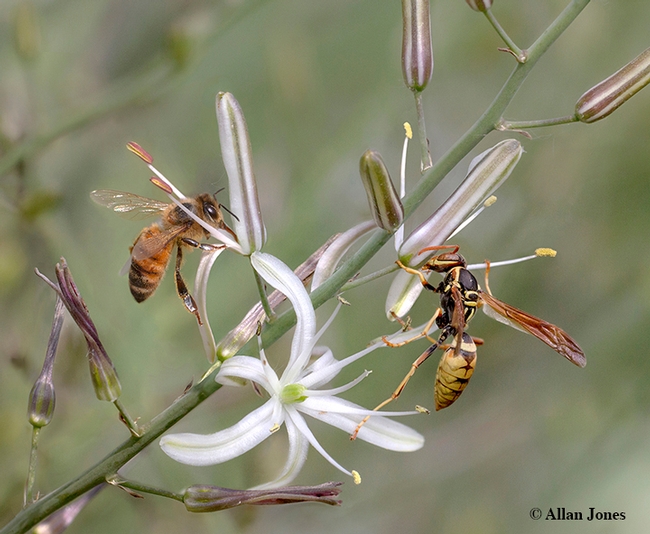
This "honey bee vs. wasp image is designed to help define and differentiate bees and wasps,” says photographer Allan Jones. (Copyrighted image by Allan Jones, used with permission.)